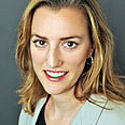11:15 AM
UMAs Continue to Grow in Turbulent Financial Markets
Amid the current market upheaval, financial advisers and wealth managers continue to leverage the benefits of unified managed accounts (UMAs), a booming segment of the managed accounts space. According to a report by Dover Financial Research, UMA assets under management have grown to $127 billion, and research and consulting firm Cerulli Associates predicts the sector will reach $500 billion in assets under management by 2011.
For many high-net-worth investors (account minimums typically range from $250,000 to $1 million) and their advisers and wealth managers, UMAs offer a convenient vehicle to diversify investments while providing the opportunity to readily rebalance portfolios, particularly attractive traits in today's volatile market. Unlike a separately managed account, which includes just one investment class, UMAs feature diversified portfolios of assets that can comprise stocks, bonds, exchange-traded funds, mutual funds and a growing number of alternative investment choices within a single investor account at a sponsor firm.

Jim Allen, CEO of Hilliard Lyons, a brokerage and financial services provider that is in the early stages of rolling out a UMA platform, says in today's bear market the UMA's diversified structure is a key benefit. "If you were in an equity portfolio, you would be subject to more volatility as opposed to a more diversified approach," he asserts. "The UMA builds upon the foundation of asset allocation modeling and provides the appropriate diversification for clients based on their risk profile."
SunTrust SVP Will O'Rielly reports that as the financial markets grew rocky, the bank leveraged its UMA platform, developed by ADVISORport, a PNC Global Investment Servicing company, to take advantage of nontraditional investment classes -- in commodities, foreign debt and real estate, for example. "Those investments found their way into our portfolios, which is a good thing," he says. "They've helped moderate our performance when bonds have been flat to down and during a bear market. With a UMA, it's much easier to diversify, much easier to take advantage of asset classes."
UMAs improve on the fundamentals of separately managed accounts, adds Hilliard Lyons' Allen. "We are preaching the UMA because it allows us to support [diversification] in what we think is a client-friendly, tax-friendly way."
A Rebalancing Act
The UMA model has evolved to the point where an overlay manager often takes over trading and administration, while the investment manager has responsibility for constructing the portfolio. For the investment manager, this enables frequent portfolio rebalancing.
"One of the reasons UMAs have been growing so much is that in the separately managed accounts area, you had one manager per account. If your growth manager performed well over a length of time, there used to be no impetus to rebalance," explains John Shepterly, manager of the consulting services group at Hilliard Lyons. "But the UMA can help you rebalance on regular timetables. It's a fundamental improvement."
Of course, UMA systems have evolved to support more-flexible models and simplify the process for investors and advisers.
"A UMA has a lot to do with the availability of information and the ability to gather and display it at a client level and at the adviser level," says Ann Bergin, managing director and general manager of wealth management services at DTCC, which sponsored the Dover Financial report. "From an adviser standpoint, if you're going to look at a client's total portfolio, you want to see a full, transparent view and deliver a similar view to the client. That's the backbone to the technology."
Melanie Rodier has worked as a print and broadcast journalist for over 10 years, covering business and finance, general news, and film trade news. Prior to joining Wall Street & Technology in April 2007, Melanie lived in Paris, where she worked for the International Herald ... View Full Bio

























